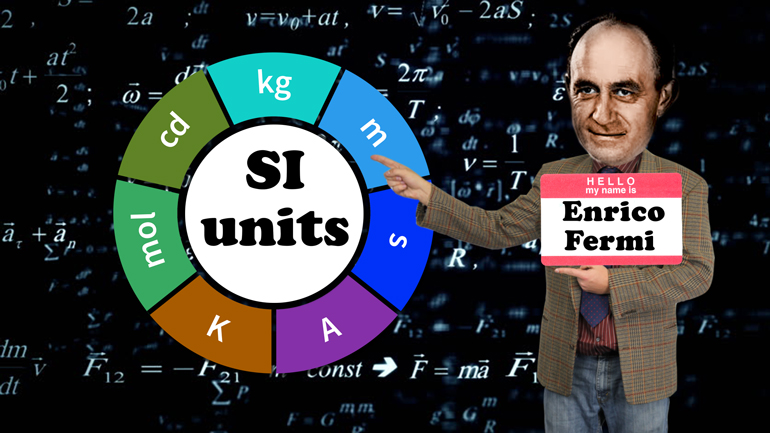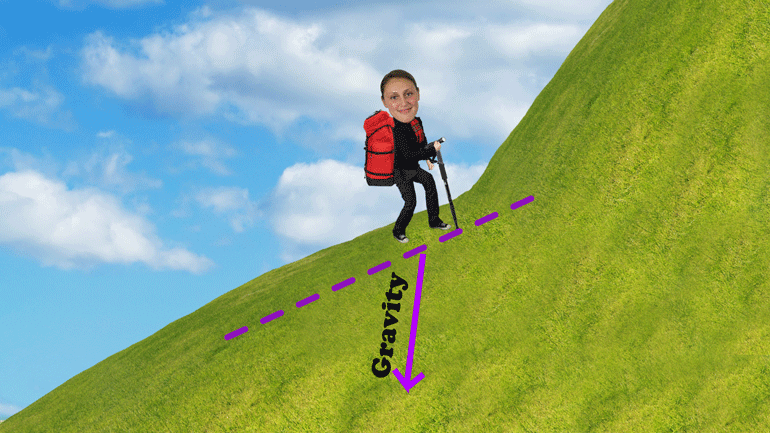ShmoopTube
Where Monty Python meets your 10th grade teacher.
Search Thousands of Shmoop Videos
Physics Videos 34 videos
Isaac Newton. Who was he? Why do we need to know about him? In a physics course, no less? Well, he's only the most famous physicist in history, and...
What are the basics of trigonometry? And why are we learning about this in a physics course? Both good questions. In this video, you'll learn about...
It's time to make our liters and meters work together. Enough of the bickering, right? In this video, we'll do some unit analysis, covering SI Unit...
Physics: Two Dimensional Motion: Separating Your X From Your Y 10 Views
Share It!
Description:
Two dimensional motion: separating your X from your Y.
Transcript
- 00:01
do you know motion separating your ex from your Y well here we go [text on screen]
- 00:37
as we all know motion can go in one direction at a time right wrong [teacher speaking to students]
- 00:44
there is actually something called two-dimensional motion it's a little
- 00:48
more complicated than a one-dimensional motion as you can imagine so up until
- 00:52
now we've just been ignoring it haha but we can ignore it no longer in our [man jumps up to kick soccer ball]
Full Transcript
- 00:57
previous lessons we've focused on displacement in just one direction or [dog walking down path]
- 01:01
one dimension to be precise the displacement could be negative or
- 01:05
positive it might have been all vertical or all horizontal but it was never boats [eagle flapping its wings]
- 01:10
in real life though we're dealing with more than one dimension let's say we're
- 01:15
playing fetch in the park with our pet anteater Charlie when we throw the ball [woman throws ball in park for anteater]
- 01:20
to Arvid to get we don't just throw it horizontally we've got to get some air
- 01:24
under the throw also so we throw it up in the air but not straight up because
- 01:30
all it needs his exercise so if you're thinking of this on a graph
- 01:34
we've got displacement on the y-axis and on the x-axis - which makes it easier to [graph on screen]
- 01:38
work with because we can look at the movement on each plane separately but
- 01:43
before we get too deep into this let's make things even easier here on earth
- 01:48
any motion has to deal with friction anything sliding on the ground has [train going by, anteater gets dragged away]
- 01:52
friction think you can escape it - by rolling instead no the friction is [anteater riding in a buggy]
- 01:56
different but it's still there even something flying in the air has the
- 02:00
force of friction for working against it which is why most meteorites burn up [meteorite zooming towards earth]
- 02:04
before they can hit surface but remember when we said we
- 02:07
like simple things so for now we're going to forget about friction we're
- 02:11
going to pretend it just isn't there don't worry all your friction fans we'll
- 02:15
get into it eventually but we want to understand the fundamentals of motion
- 02:19
here something else that will help us with those fundamentals we're going to
- 02:23
assume that any horizontal motion is constant we're also going to assume that
- 02:27
any vertical motion is accelerated by gravity and only gravity so when we
- 02:32
throw a ball in the air we're not going to be graphing its motion if an eagle [eagle steals ball]
- 02:35
swoops down and grabs it one important thing to understand is that horizontal
- 02:39
and vertical motion are independent of each other
- 02:41
what do we mean by that well let's do a little thought experiment say we're
- 02:46
going to play a little paintball I'm gonna fire off a test shot to make sure
- 02:50
nothing jams up when it counts so we line up the gun parallel with the ground
- 02:54
completely horizontal if our friend lets a paintball drop to the ground at the [man with paintball gun]
- 02:59
same height as our gun and it drops at the exact same time as we pull the [woman holding ball in hand]
- 03:04
trigger which ball hits the ground first the one shot out of the gun or the one
- 03:08
our friend just drops we might think that the ball that's shot out of the gun
- 03:13
will stay in the air longer after all it's covering so much distance
- 03:16
horizontally but in fact both would hit the ground at the exact same time and
- 03:22
that's because the horizontal motion is completely separate from the vertical [paint balls splatter on ground]
- 03:27
motion the effective gravity the downward acceleration is exactly the
- 03:32
same on both paintballs so even though the horizontal velocity is completely
- 03:36
different the vertical displacement velocity and acceleration are the same
- 03:41
if you want to see this with a real gun and a real bullet the Mythbusters did an [woman watching tv from couch]
- 03:46
experiment on the exact same things you can click on the link here to watch a
- 03:50
consolidated version of the experiment verdict physics tells the truth but then
- 03:55
physics always tells the truth that's why we like it so much as we've said
- 04:00
vertical and horizontal motion are independent of each other but that [writing on chalk board]
- 04:03
doesn't mean they're not linked what's the link between them time at any point
- 04:08
in time we can describe an object horizontal or vertical displacement its
- 04:13
horizontal or vertical velocity or its horizontal and vertical acceleration
- 04:18
and the same equations apply to both direction but we'll rewrite them
- 04:22
separately to make sure we don't confuse our X for our Y what are those equations
- 04:27
we thought you never asked these might look pretty familiar we've seen them in
- 04:32
previous lessons let's look at a simple one first we want to find the change in [writing on chalk board]
- 04:37
displacement along the x axis to do that we'll subtract the initial displacement
- 04:41
from the final displacement another way to find that displacement is if we have
- 04:45
the velocity and the time in that case the change in displacement equals the
- 04:49
velocity in the direction of the x axis that's why we have the V sub X here
- 04:54
times the change in time if I'm looking to find the same thing in the y axis
- 04:58
we'll just change all the X's in two y's like this if we're trying to find
- 05:02
displacement but we have to deal with acceleration then do we have an equation
- 05:06
for u in that case the change in displacement along the x axis equals the
- 05:11
initial velocity along the x axis which is what V sub X I stands for times time
- 05:17
plus one-half of the acceleration along the x axis times the square of the
- 05:21
elapsed time it just trips off the tongue doesn't it and again when we're
- 05:26
dealing with vertical motion which is going to substitute Y for every X even
- 05:30
the subscripts okay one last equation to look at and if all these B's and x's and
- 05:36
T's have your head spinning feel free to take a second to clear your head but [student with equations dancing around their head]
- 05:40
we're going to be using these equations like crazy in this unit so as you
- 05:44
Americans love to say that go up okay so this is what we'll use to find the final
- 05:50
velocity along which have access if we don't have info on how much time elapsed [writing on chalk board]
- 05:54
but we do have info on final velocity displacement and acceleration so the
- 06:00
square of the final velocity along the y axis yes that's right when mixing it up
- 06:05
on you leading with the Y motion this time equals the square of the initial
- 06:10
velocity along the y axis plus two times the acceleration along the x axis times
- 06:16
the change in displacement and this is what it looked like for the
- 06:20
x-axis rather than the y-axis it just looks X yeah and it's important
- 06:25
to recognize that we can never ever ever put X's and Y's in the same equation the
- 06:31
dimensions have to be kept separate which sounds like something from a
- 06:35
monster movie but this would result in something worse than an interdimensional [t-rex chasing X and Y]
- 06:40
monster it would result in the wrong answer that's really scary so let's put
- 06:46
these equations to work shall we and we'll start with something we'll are too
- 06:50
familiar with falling down anything that's in freefall experiences
- 06:55
acceleration in one direction straight down that's gravity for you and that
- 06:59
doesn't matter if we take a wrong turn and drive off a cliff or if Steph Curry
- 07:03
takes a half-court buzzer-beater in either case we have velocity along
- 07:07
the x axis but the only acceleration will be along the y axis with no
- 07:12
acceleration that horizontal speed will stay the same forever well not forever
- 07:17
forever but car will be coming to a sudden stop before too long this type of
- 07:23
motion with acceleration in the Y direction and the constant motion in the
- 07:26
X Direction is called projectile motion and when we have a projectile motion we [graph on screen]
- 07:32
get to assume acceleration along the x axis is 0 meters per second squared and
- 07:36
the acceleration along the y axis is negative 9.8 meters per second squared
- 07:42
when we have a projectile motion we're able to get rid of some of those [writing on chalk board]
- 07:46
equations we looked at before we had six equations three of each for x and y but
- 07:51
since we don't have any acceleration along the x axis we only need one
- 07:55
equation for that motion we'll need the one for the change in
- 07:58
displacement along VX which will either be the final displacement minus the
- 08:02
initial displacement all the velocity times the change in time since we do
- 08:07
have the acceleration in the Y direction we'll have a couple of equations that we
- 08:10
can use for that motion first we have this one where we'll use the velocity
- 08:15
the acceleration of gravity and and if we don't have the elapsed time we
- 08:19
can use this one that certainly cleans things up for us
- 08:22
if we have constant acceleration in one direction and constant motion in the [basketball game]
- 08:26
other we end up with a parabola just like that sweet Steph Curry jump shot
- 08:31
hmm we can see that represented here here
- 08:35
each basketball represents an equal interval of time we can see that the
- 08:39
speed is much faster at each end of the graph and slower at the top here let's
- 08:44
add some arrows to make that clearer see how all the horizontal arrows are the
- 08:49
same length that's that constant motion we keep
- 08:51
yapping about and the vertical arrows those are the same length or magnitude
- 08:55
at each position along the y axis it's just the directions that change going up
- 09:00
for the first half and down for the second half it's like the first half has
- 09:04
an evil twin in the second half of the jump shot so this is a graph of the
- 09:08
motion combining the x and y motions but we still have time that's binding them
- 09:12
together what would the graph for the motion in the X direction looked like in
- 09:16
terms of time funny you should ask we just so happen to have the graph
- 09:19
right here see that nice straight line that's constant velocity if we ever saw [graph on screen]
- 09:25
it just like we'd expect when using this equation and for the Y motion in terms
- 09:30
of time boom another parabola it's like poetry in motion or poetry in a motion
- 09:36
equation we're not going to lie two-dimensional motion is more
- 09:40
complicated than one-dimensional but as long as we keep x and y separate we
- 09:44
should be able to handle it just fine after all it's just a matter of applying
- 09:48
the right equations to the right direction and we've worked with these
- 09:52
equations before so we know we're up to the task
- 09:55
let's just be thankful there's no such thing as
- 09:58
dimension
Related Videos
When you're about to marry the love of your life, not many things could stop you. However, finding out that your future hubby is keeping his crazy...
Here at Shmoop, we work for kids, not just the bottom line. Founded by David Siminoff and his wife Ellen Siminoff, Shmoop was originally conceived...
ACT Math: Elementary Algebra Drill 4, Problem 5. What is the solution to the problem shown?
AP® English Literature and Composition Passage Drill 1, Problem 1. Which literary device is used in lines 31 to 37?
AP® English Literature and Composition Passage Drill 2, Problem 1. What claim does Bacon make that contradicts the maxim "Whatsoever is delig...






































